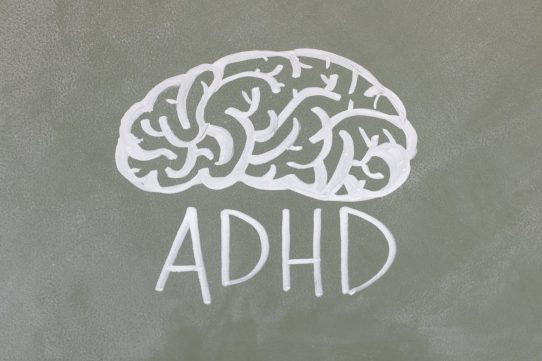The word neurodiversity has become increasingly common in conversations about autism, ADHD, learning differences, and mental health. Yet for many people, it’s still a new and sometimes confusing term. What does it really mean? And why does it matter so much in how we think about the human mind?
At its heart, neurodiversity is about acceptance and respect — understanding that not all brains think, learn, or communicate in the same way. It’s the idea that neurological differences are part of the natural variety of human life, not mistakes to be corrected.
This simple but powerful concept has reshaped how families, educators, and workplaces talk about conditions like autism. Instead of focusing on deficits, neurodiversity invites us to look at strengths, adaptability, and inclusion.
What Neurodiversity Means
The term neurodiversity was first coined in the late 1990s by sociologist Judy Singer, who herself is autistic. She used it to describe the natural variation of human brains — just as biodiversity celebrates the variety of life forms on Earth.
Under the neurodiversity framework, autism, ADHD, dyslexia, Tourette’s, and other neurological differences are not “disorders” to be fixed, but forms of human diversity to be understood and accommodated.
The word itself breaks down into two parts:
- Neuro – referring to the brain and nervous system.
- Diversity – referring to variation or difference.
Put simply, neurodiversity means that different types of minds exist, and all are valid.
The Neurodiversity Movement
Over time, neurodiversity grew into a social movement, led largely by autistic adults and self-advocates, calling for acceptance instead of intervention. The movement challenges the idea that there’s only one “right” way to think, behave, or communicate.
This doesn’t mean that support or therapy isn’t important. It means that support should focus on helping individuals thrive as they are, rather than trying to make them conform to neurotypical norms.
For example:
- Instead of forcing eye contact, help someone find alternative ways to show engagement.
- Instead of demanding perfect focus, structure tasks to fit their attention style.
- Instead of labeling difference as “problem behavior,” ask what environment might be overwhelming or inaccessible.
The neurodiversity movement promotes acceptance, inclusion, and equity — not pity or correction.
Neurodiversity vs. Neurotypical
Within this framework, people whose brains function according to socially expected patterns are often called neurotypical. Those whose brains process information differently — autistic, ADHD, dyslexic, and so on — are considered neurodivergent.
Neither term is a judgment; they simply describe how the brain operates.
A neurotypical person might find social cues intuitive and routines comforting. A neurodivergent person might find the same situations confusing or overstimulating — or might notice patterns and details that others miss entirely.
Understanding this difference reduces blame and encourages mutual respect. It shifts the focus from what’s wrong to what’s different.
Why the Concept Matters
For decades, society treated neurological differences as deficits. Schools and workplaces were designed for one kind of learner — verbal, still, focused, and socially intuitive. Those who didn’t fit that mold were often labeled as “difficult,” “lazy,” or “unmotivated.”
The neurodiversity approach changes that story. It reminds us that brains evolved to serve many purposes. Some people see big pictures; others focus on minute details. Some think visually, some logically, others musically or emotionally.
Embracing neurodiversity has several key benefits:
- Reduces stigma by framing differences as natural, not pathological.
- Encourages inclusion in education and employment.
- Builds empathy across communities and families.
- Celebrates strengths alongside challenges.
When we stop viewing difference as deficit, everyone benefits — because inclusion helps society function more creatively and compassionately.
Everyday Examples of Neurodiversity
You see neurodiversity everywhere once you start looking.
In classrooms, one student might doodle to stay focused while another thrives in quiet reading. In workplaces, a software engineer might hyperfocus for hours on a coding problem while a designer relies on intuition and sensory awareness.
Neither approach is better; both contribute something valuable. The neurodiversity lens helps teachers, managers, and parents recognize that there isn’t one correct way to learn or succeed.
For families raising autistic children, this perspective can be life-changing. It replaces the question “How can I make my child fit in?” with “How can I make the world fit better around my child?”
Neurodiversity and Autism
Autism is central to the neurodiversity conversation because it’s one of the most visible and historically misunderstood forms of neurological difference. For years, autistic people were spoken about but rarely heard. The neurodiversity movement changed that — placing autistic voices at the center of the discussion.
From this viewpoint, autism isn’t a checklist of impairments but a different cognitive style with its own strengths and challenges. Autistic individuals may have heightened focus, honesty, pattern recognition, and creativity. At the same time, they may struggle with sensory overload, communication, or flexibility in social situations.
Neurodiversity encourages us to value both — to see the person, not just the diagnosis.
Balancing Acceptance and Support
Some critics worry that celebrating neurodiversity means ignoring the real challenges that autistic or ADHD individuals face. In truth, the movement doesn’t deny those struggles; it reframes how we respond to them.
Support remains essential — but it should be compassionate, respectful, and individualized. That means helping people build skills and comfort without shaming who they are.
Acceptance and support are not opposites. They work together:
- Acceptance says, “You belong as you are.”
- Support says, “How can I help you succeed in this world?”
This balance helps families avoid burnout, guilt, and unrealistic expectations.
Language Matters
How we talk about neurological difference shapes how we think about it. The neurodiversity movement emphasizes identity-affirming language — saying “autistic person” rather than “person with autism,” for example, if that’s what the community prefers.
The goal is to respect individual choice. Some prefer identity-first language, others person-first. What matters most is respect — and the understanding that language should reflect empowerment, not limitation.
It also means avoiding negative framing like “suffers from autism” or “afflicted by ADHD.” These phrases imply tragedy where there is none. More accurate language would be “lives with,” “experiences,” or “is autistic.” Words can open doors or close them — and inclusive language builds bridges.
Neurodiversity in Education
For teachers and schools, embracing neurodiversity means recognizing that not every child learns best by sitting still, taking notes, or memorizing facts. Some children need movement; others need visuals, headphones, or hands-on activities.
Inclusive classrooms might offer:
- Flexible seating or sensory-friendly corners.
- Multiple ways to demonstrate learning — writing, drawing, or speaking.
- Clear, visual routines to reduce anxiety.
- Teachers trained in neurodiversity awareness.
When schools adapt to neurodivergent learners, outcomes improve for everyone. Students learn empathy, collaboration, and the value of different minds working together.
Neurodiversity in the Workplace
More companies are beginning to see the value of neurodiverse teams. Autistic employees, for example, often bring exceptional focus, pattern recognition, and honesty — traits that can improve productivity and innovation.
Workplaces that adopt inclusive practices, such as quiet workspaces, flexible schedules, or clear communication, benefit from increased creativity and loyalty.
Organizations like Microsoft, SAP, and Deloitte have launched neurodiversity hiring initiatives that highlight just how powerful inclusion can be — not as charity, but as smart business.
The Power of Representation
Media and storytelling also shape how society understands difference. In recent years, shows, films, and books featuring autistic or neurodivergent characters have started moving away from stereotypes toward more authentic portrayals.
When neurodivergent people see themselves represented accurately, it fosters self-acceptance and pride. It reminds families that they are not alone, and it encourages the public to view difference through a lens of respect rather than pity.
How Families Can Embrace Neurodiversity
For parents and caregivers, embracing neurodiversity begins with mindset. Instead of seeing challenges as signs of failure, view them as part of your child’s unique profile. Ask what environments help them thrive — bright or dim light, quiet or movement, predictability or variety.
At home, you can:
- Create sensory-friendly spaces.
- Let routines reflect your child’s comfort zones.
- Celebrate special interests as gateways for learning.
- Model acceptance through inclusive language.
- Teach siblings empathy through understanding, not comparison.
Families who adopt the neurodiversity perspective often find relief — the pressure to “fix” fades, replaced by a focus on connection and growth.
Final Thoughts
Neurodiversity isn’t a trend. It’s a shift in how we see ourselves and one another — a reminder that difference is not disorder, and variety is not weakness.
When we recognize that every brain brings something valuable, we move closer to a world built on inclusion rather than conformity.
For families raising autistic children, the concept of neurodiversity offers hope — not false promises, but a real, sustainable sense of belonging. It says: Your child is not broken. Your child is brilliant in ways the world is still learning to understand.
Photo by Tara Winstead: https://www.pexels.com/photo/born-to-stand-out-on-pink-background-8386151








